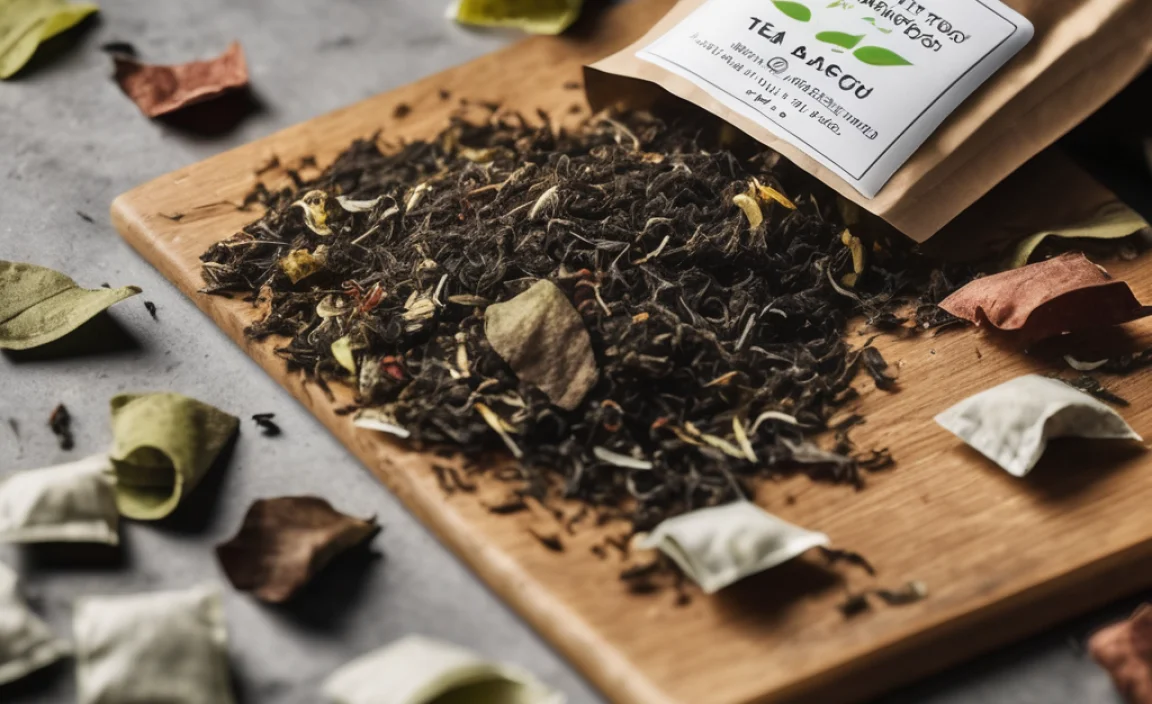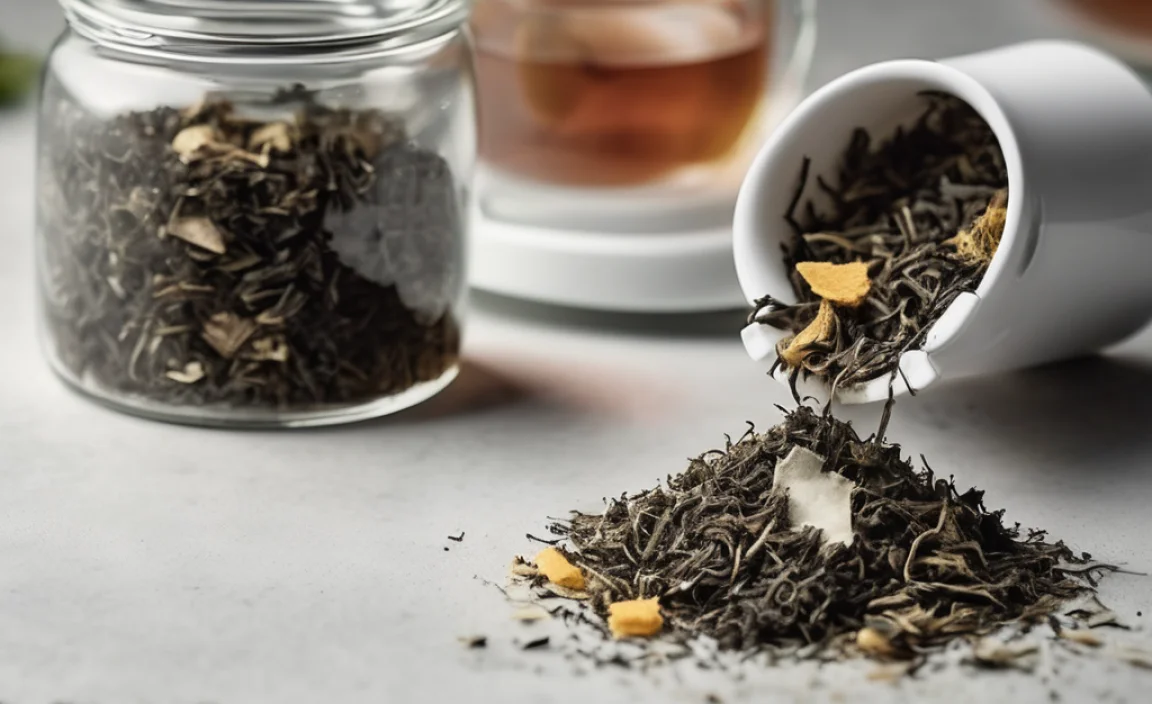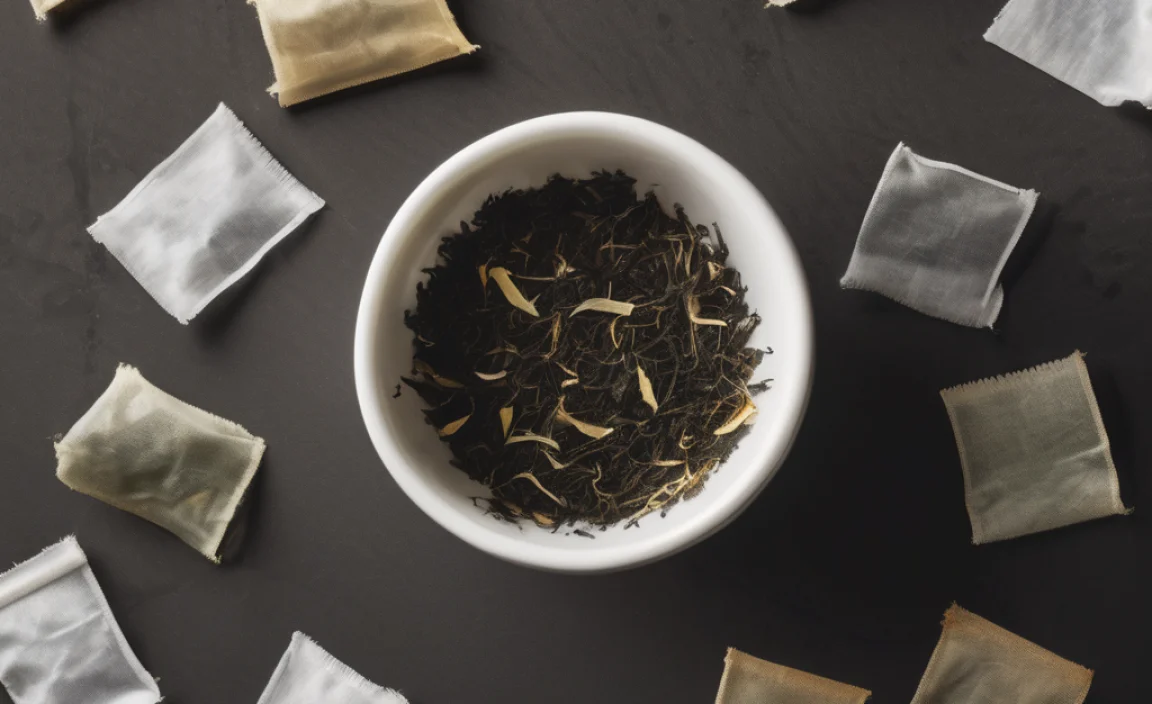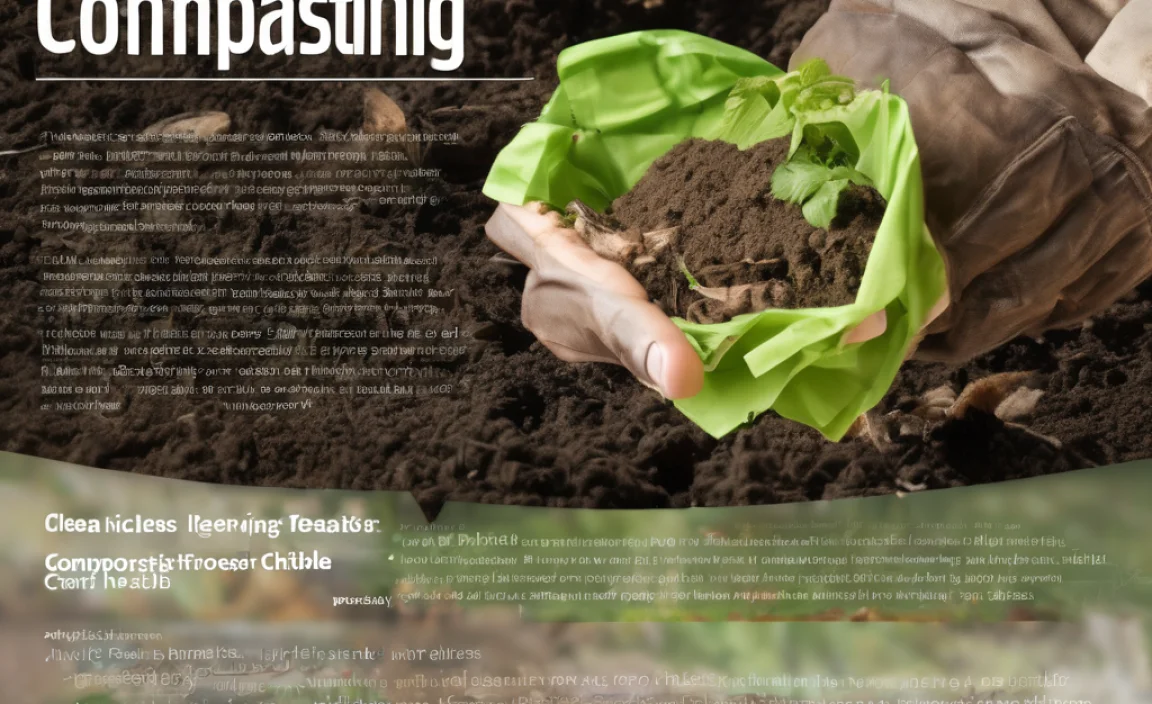Love your morning cuppa but hate the waste? You’re not alone! Many of us enjoy a warm mug of tea, but the used tea bags can feel like a small guilt trip for your garbage bin. Don’t toss them yet! Composting tea bags is simpler than you think, and it’s a fantastic way to give back to the earth. This guide will show you how to turn those used bags into garden gold, effortlessly.
Tea Bags Composting Guide: Essential Effortless Tips
Hey there, fellow home improvers and garden enthusiasts! It’s Troy D Harn from TopChooser, here to help you tackle everyday tasks with ease. Today, we’re diving into something small but mighty: composting your used tea bags. It might sound a bit niche, but if you’re looking to reduce waste and boost your garden’s health, this is a perfect project. We’ll break down exactly what you need to know, step-by-step, so you can start composting those tea bags with confidence. Let’s make some magic for your garden!
Why Compost Your Tea Bags? The Blooming Benefits

Composting isn’t just a buzzword; it’s a fantastic way to recycle organic matter and create nutrient-rich soil for your plants. When you compost your tea bags, you’re doing a few great things:
- Reduces Landfill Waste: Millions of tea bags end up in landfills every year. Composting diverts this waste, lessening the burden on our environment.
- Enriches Your Soil: Tea leaves are full of nitrogen and other nutrients that decompose into valuable compost, a natural fertilizer for your plants.
- Saves Money: Instead of buying commercial fertilizers, you get nutrient-rich soil for free from your own kitchen scraps.
- Improves Soil Structure: Compost helps soil retain moisture and air, making it healthier for plant roots.
Are All Tea Bags Compostable? What You Need to Know

This is a crucial question, and the answer is… it depends! Not all tea bags are created equal when it comes to composting. The main things to watch out for are the materials used in the bag itself and the tag and string.
The Tea Bag Material
- Paper/Plant-Based Bags: Most standard paper tea bags are compostable. Many brands have transitioned to using plant-based materials like corn starch, hemp, or abaca. These break down beautifully in a compost pile.
- Plastic/Polypropylene Bags: Some tea bags, especially those in pyramid or “silken” styles, might be sealed with plastic (often polypropylene). These will not break down and can contaminate your compost. Check the packaging or the bag material if you’re unsure.
The Tag and String
- Cotton or Natural Fiber Strings: These are generally compostable.
- Plastic or Metallic Threads: Some strings might contain synthetic materials or even a bit of metal, which you’ll want to remove.
- Paper Tags: Most paper tags are fine, but some might have a plastic coating.
The Golden Rule: When in doubt, do a quick check! If the packaging clearly states “compostable” or you can identify natural materials, you’re good to go. If it seems like there’s plastic involved, it’s safer to toss the bag in the trash or, even better, just add the tea leaves to your compost after removing any synthetic parts. Many sources, like the Environmental Protection Agency (EPA), offer fantastic resources on what can and cannot be composted.
Getting Started: Your Tea Bag Composting Toolkit

The beauty of composting tea bags is that you don’t need a lot of fancy equipment. You likely already have most of what you need!
Essential Items:
- Used Tea Bags: The star of our show!
- A Compost Bin or Pile: This can be a dedicated bin (store-bought or DIY), a simple pile in your yard, or even a worm bin (vermicomposting).
- Kitchen Scraps: Tea bags are just one part of what goes into compost. Think fruit and vegetable peels, coffee grounds, eggshells, and yard waste.
- A Small Container for Kitchen Scraps: To collect your used tea bags and other compostable items before taking them out to your main compost bin.
Helpful, But Not Required:
- Staples or Staples Remover: If your tea bags have staples.
- Scissors: For cutting open bags if needed.
- Gardening Gloves: To keep your hands clean.
Step-by-Step: How to Compost Tea Bags Effortlessly

Ready to turn that brew into garden gold? It’s as easy as 1, 2, 3!
Step 1: Steep and Drain
After you’ve enjoyed your cup of tea, let the tea bag sit in your mug for a minute. Then, gently squeeze out any excess water. You don’t need to wring it bone dry, just get rid of the dripping liquid. This prevents your compost from becoming too soggy.
Step 2: Prepare Your Tea Bag
This is where you do a quick check:
- Remove Staples: If your tea bag has a metal staple, carefully remove it with your fingers or a staple remover.
- Remove Non-Compostable Tags/Strings: If the tag or string feels synthetic or has plastic elements, snip it off and discard it in the trash.
- Open the Bag (Optional): For faster decomposition, you can gently open the tea bag and empty the tea leaves directly into your compost bin. This exposes more surface area to the microbes. However, if the bag is made of fully compostable material, you can often just toss the whole bag in.
Step 3: Add to Your Compost Bin
Toss your prepared tea bag (or just the tea leaves) into your compost bin or pile. It’s best to layer your compostable materials. Tea bags are considered a “green” material, which provides nitrogen. Aim for a good mix of greens and “browns” (like dried leaves, shredded cardboard, or newspaper) for a balanced compost. A general rule of thumb is about 2 parts browns to 1 part greens.
Pro Tip: If you’re using a worm bin, adding tea leaves is great! Worms love them. Just be mindful of adding large quantities all at once; it’s better to add them in smaller batches.
Step 4: Maintain Your Compost
Keep your compost pile moist, like a wrung-out sponge, but not soaking wet. Turn or stir it occasionally (every week or two) to introduce air, which helps the decomposition process. This helps everything break down faster and prevents unpleasant odors.
What Else Can Go In Your Compost? A Quick Guide!

Tea bags are fantastic, but your compost pile can handle so much more! Think of it as a recycling center for your kitchen and yard.
The “Greens” (Nitrogen-Rich):
- Fruit and vegetable scraps (peels, cores, rinds)
- Coffee grounds and filters
- Grass clippings
- Plant trimmings
- Eggshells
| What Goes In (Greens) | What Goes In (Browns) | Avoid (Or Compost With Caution) |
|---|---|---|
| Fruit & Veggie Scraps | Dried Leaves | Meat & Dairy Products (Can attract pests and create odors) |
| Coffee Grounds | Shredded Newspaper (black ink only) | Oily Foods |
| Grass Clippings | Cardboard (uncoated, torn into small pieces) | Diseased Plants (Can spread disease) |
| Tea Bags (compostable ones) | Straw | Weeds with Mature Seeds (Seeds might survive and sprout) |
| Eggshells | Twigs and Small Branches | Pet Waste (from cats and dogs, can contain pathogens) |
The “Browns” (Carbon-Rich):
- Dried leaves
- Shredded newspaper (black ink is best)
- Cardboard (torn into small pieces)
- Straw or hay
- Wood chips or sawdust (in moderation)
Balancing greens and browns is key to a healthy compost pile. Too many greens can make it wet and smelly; too many browns will slow down decomposition.
Troubleshooting Common Composting Hiccups
Even with the simplest methods, you might run into a minor issue. Here’s how to fix it:
- Smelly Compost: Often caused by too many greens or being too wet. Add more brown materials (like dried leaves or shredded cardboard) and turn the pile to aerate it.
- Compost is too Dry: If it feels dusty and isn’t breaking down, add water. It should feel like a damp sponge. You can also add more green materials, which have higher moisture content.
- Compost Isn’t Breaking Down: Ensure you have a good mix of greens and browns, adequate moisture, and sufficient aeration (turning). If your materials are in large pieces, chop them smaller to speed up decomposition.
- Pests (Flies, Rodents): This is usually due to adding prohibited items like meat or dairy, or if the compost is too wet. Make sure your bin is secure and avoid adding anything that could attract unwanted visitors. Burying new kitchen scraps near the center of the pile can also help.
For more in-depth information on composting best practices, resources like the EarthEasy guides offer wonderful, practical advice.
Conclusion: Sip, Compost, and Grow!
See? Composting tea bags is a refreshingly simple way to contribute to a healthier planet and a more vibrant garden. By making a few small adjustments to how you handle your used tea bags—checking for compostable materials and removing any non-natural bits—you can easily incorporate them into your composting routine. From a simple brew to nutrient-rich soil, you’re closing the loop and creating something wonderful. So next time you enjoy your tea, remember the green potential waiting in that little bag. Happy composting, and happy growing!
Frequently Asked Questions About Composting Tea Bags
Got more questions? We’ve got answers!
Q1: Can I compost tea bags from herbal teas?
A: Yes! Herbal teas are made from plants, so their bags (provided they are compostable and don’t have plastic components) are great for the compost pile. They add valuable organic matter.
Q2: What if my tea bags have a plastic staple?
A: If your tea bag has a small metal staple, it’s generally okay to leave it in the compost. While not ideal, most home compost systems break these down or they can be sifted out later. However, if you’re concerned or have a very fine compost system, it’s best to remove it.
Q3: How long does it take for tea bags to compost?
A: The tea leaves themselves break down relatively quickly, often within weeks, especially if added to a well-managed compost pile. The bag material will take slightly longer, depending on its composition. With a well-balanced and actively managed compost, you might have finished compost in 1–3 months.
Q4: Can I just throw tea bags directly into my garden soil?
A: While the tea leaves will eventually break down in your garden, it’s usually better to compost them first. Composting breaks down the material into a more stable, nutrient-rich form that is readily available to plants. Adding small amounts directly might not harm your garden, but composting provides a more beneficial boost.
Q5: Do I need to remove the string from the tea bag?
A: If the string is made of natural fibers like cotton, it’s usually fine to leave it. However, if you suspect it’s synthetic or has a plastic component, it’s best to snip it off and discard it to ensure your compost is purely organic.
Q6: My tea bags have a plastic mesh window for some reason, can I compost those?
A: No, if a tea bag has any plastic mesh or a plastic seal, the plastic parts should not go into your compost. These will not break down and will contaminate your compost. You would need to empty the tea leaves and discard the plastic components in the trash.

I am passionate about home engineering. I specialize in designing, installing, and maintaining heating, ventilation, and air conditioning systems. My goal is to help people stay comfortable in their homes all year long.


